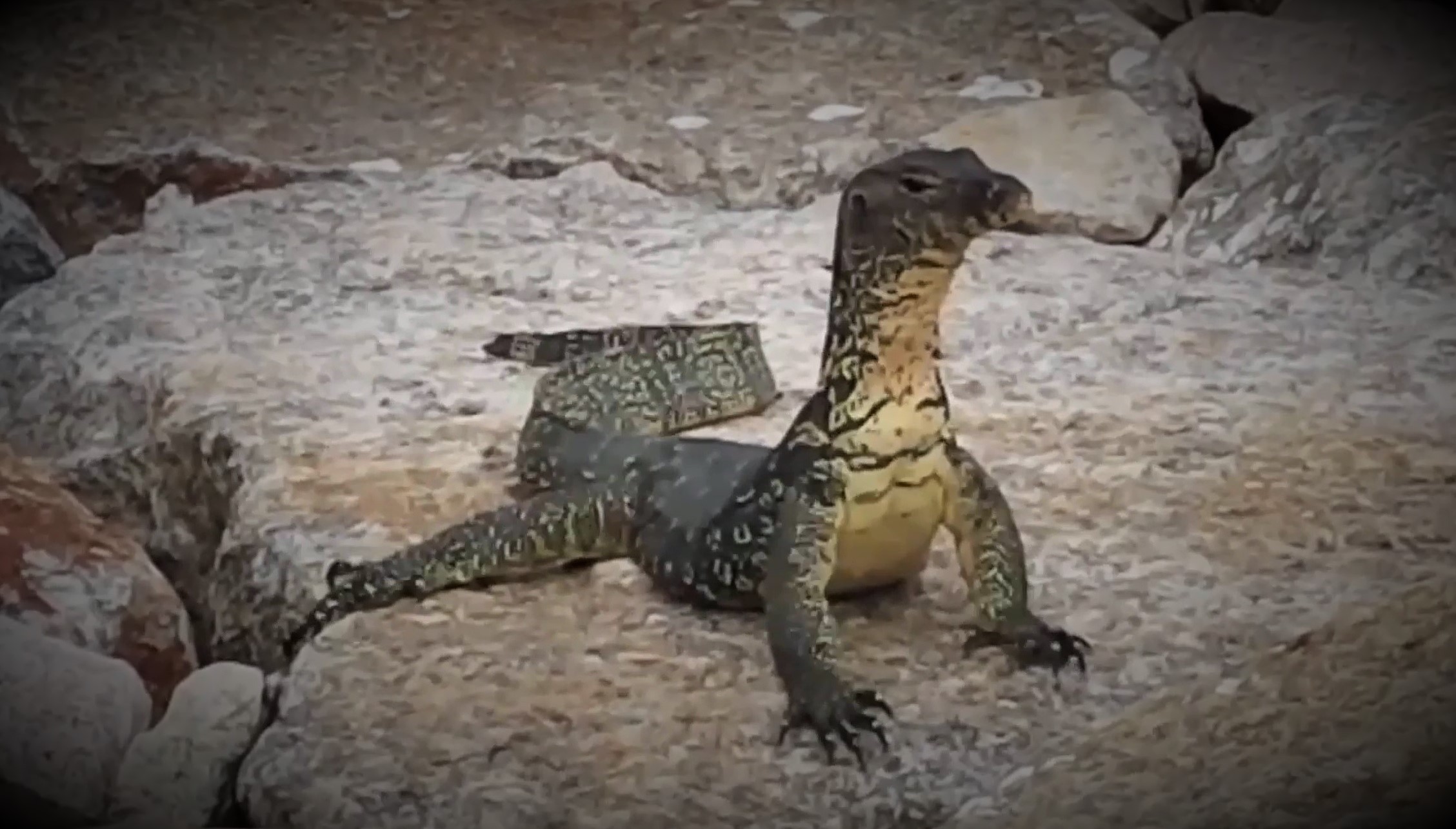
They are found in environments such as small islands, rocky outcrops, and mangrove swamps, which could not support other large carnivores.
They are so successful because they are cold-blooded and therefore make more efficient use of their food. Warm-blooded creatures have to constantly burn fuel to keep their temperature constant. But cold-blooded creatures do not. and therefore can survive on less food.
Water monitors are more active than reptiles their size because they can maintain a nearly constant body temperature.
Lizards in general smell with their tongue, just like snakes, a monitor lizard will stick out its tongue to catch odor particles in the air, then withdraw its tongue and place those particles on the roof of its mouth where there are special sensory cells. The lizard can use these scent cues to find food or a mate or to spot enemies.
The main hunting technique of the monitor lizard is to run after the prey it has seen instead of stalking and ambushing. Like snakes, they have a forked tongue that sticks in and out regularly to sniff out prey and other things in the environment. Highly mobile, they swim well by keeping their limbs to one side of the body and propelling themselves through sinuous undulations of the flattened tail.
They have even been seen swimming in the sea, being able to stay underwater for up to half an hour. They run fast for their size as they have powerful leg muscles. In fact they can run faster than most humans.
When attacked, monitor lizards will attempt to intimidate predators by lashing out with their tails, inflating their throats, hissing loudly, turning sideways, and compressing their bodies. When cornered they will bite and scratch unlike other lizards, they do not lose their tails in self-defense.
They also climb well, foraging for food and escaping predators, using their strong curved claws.